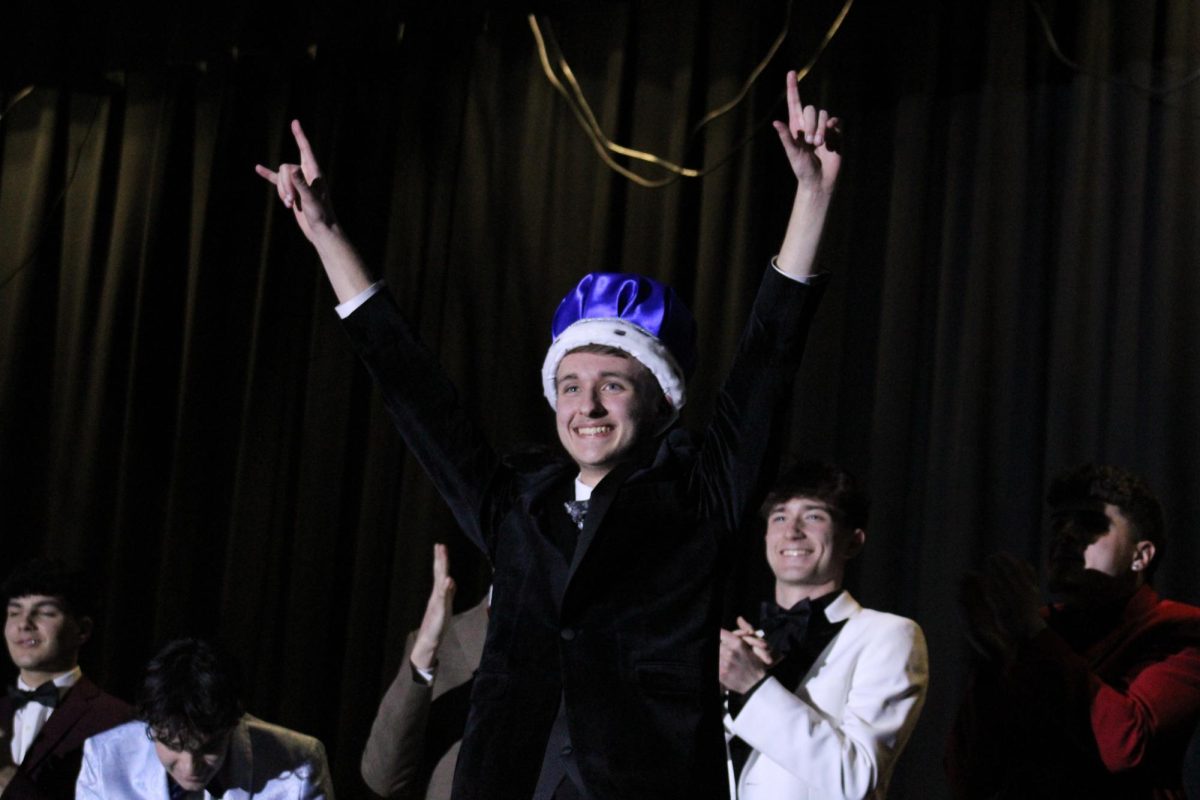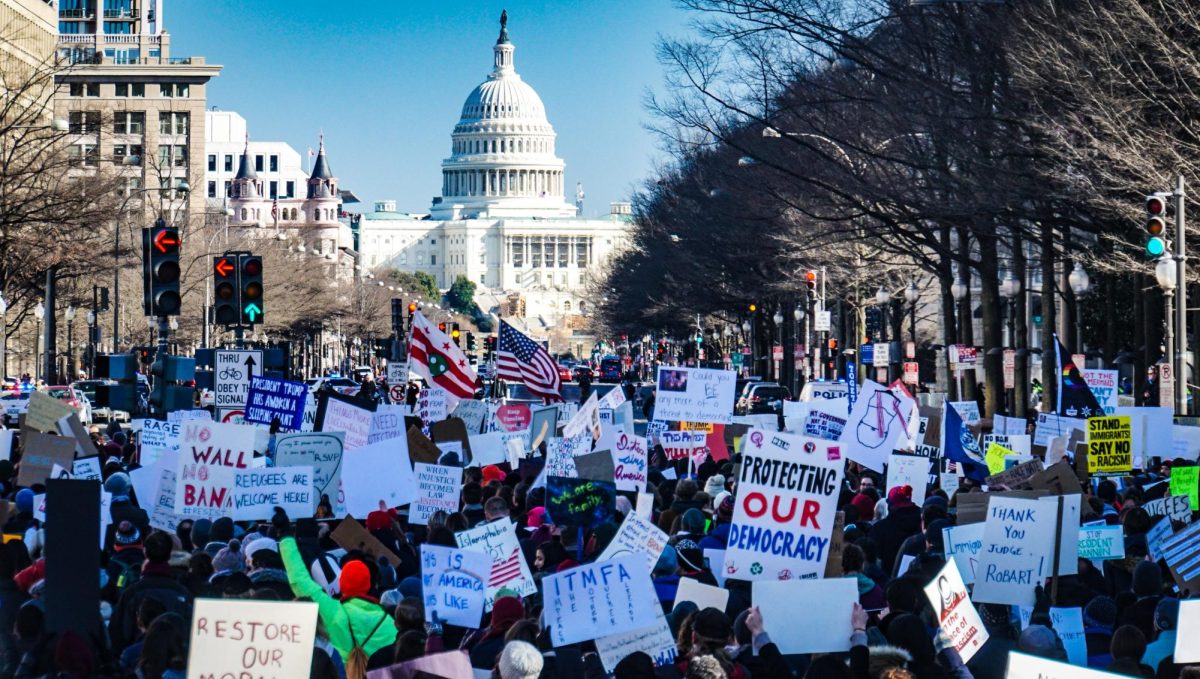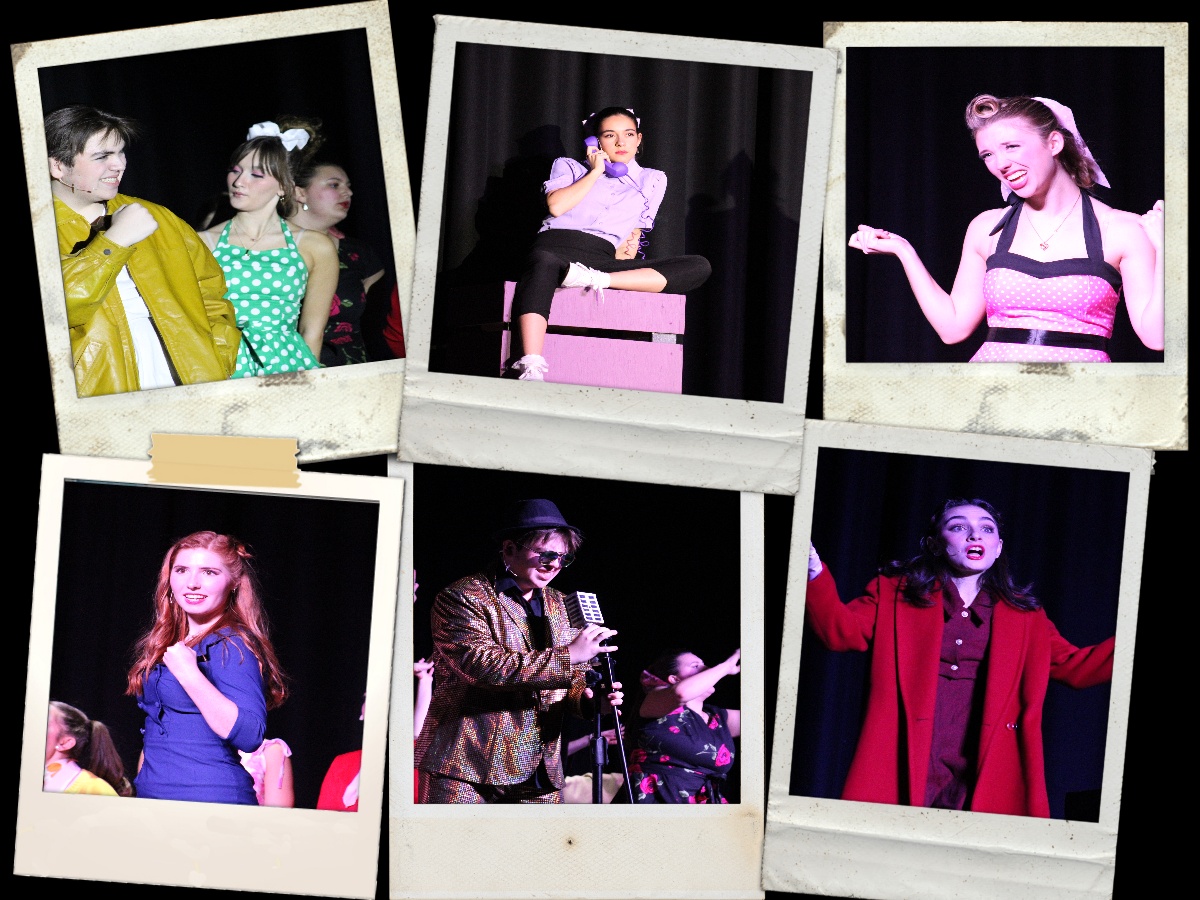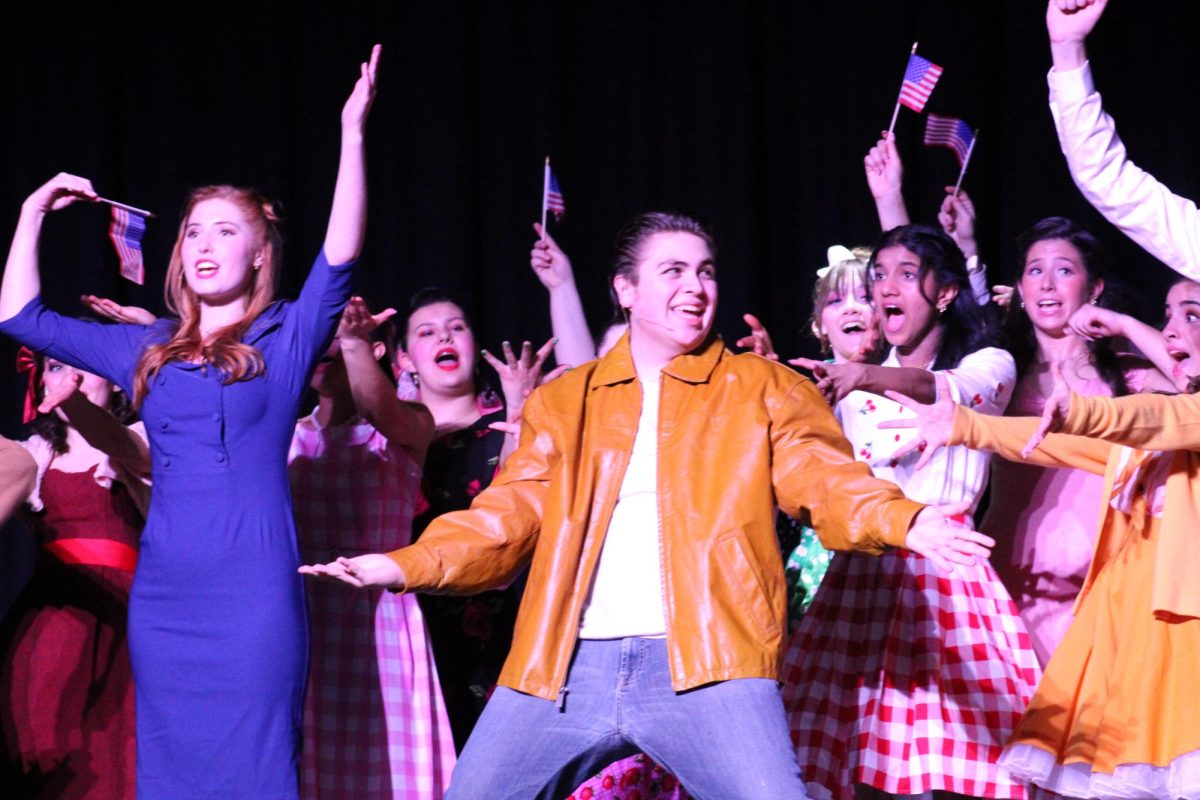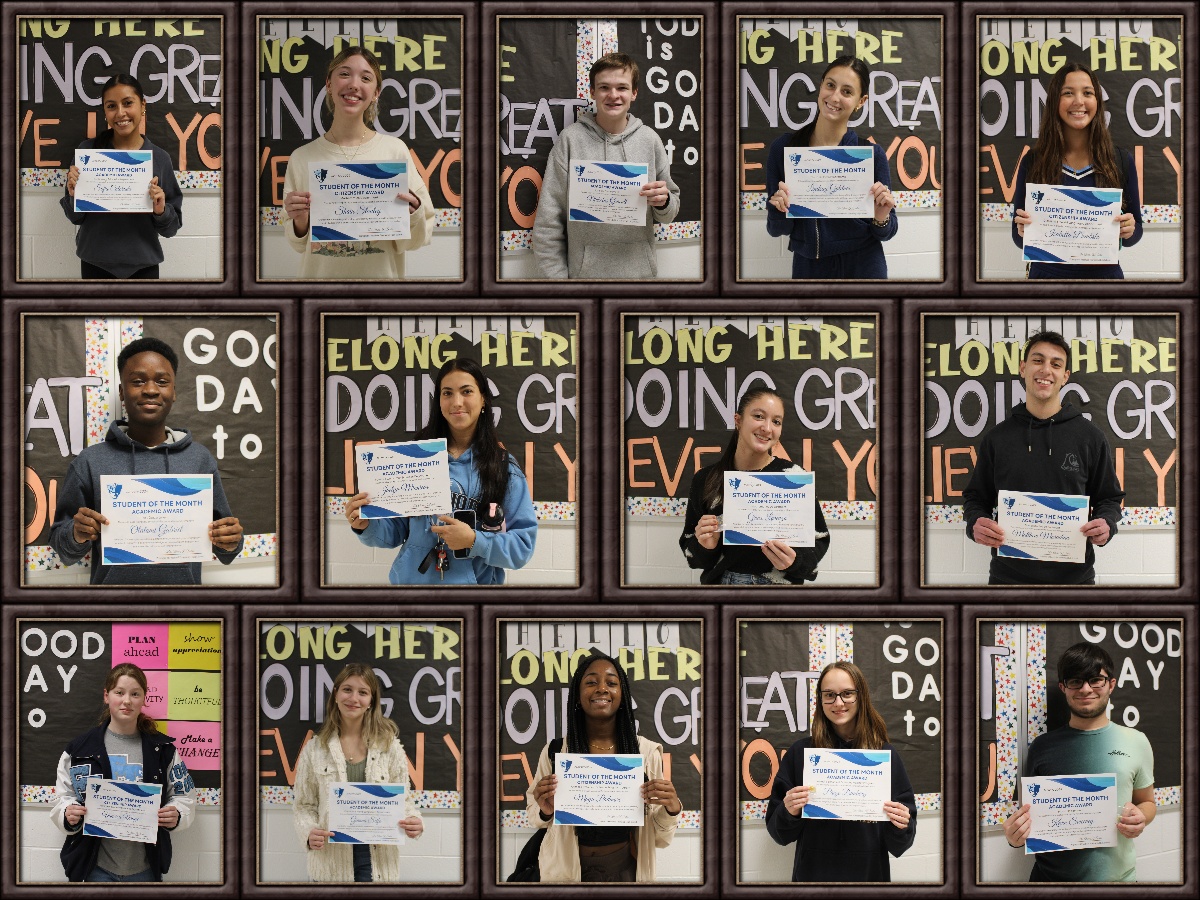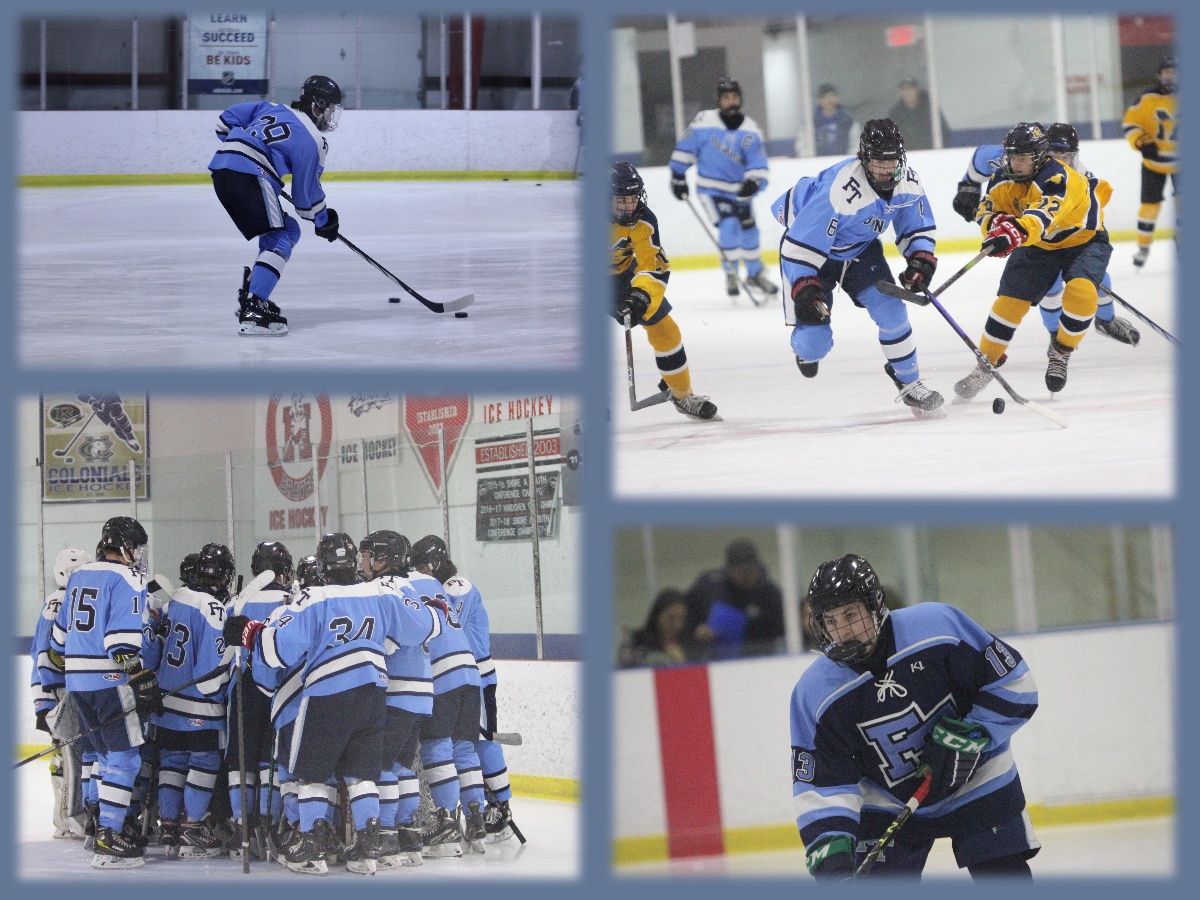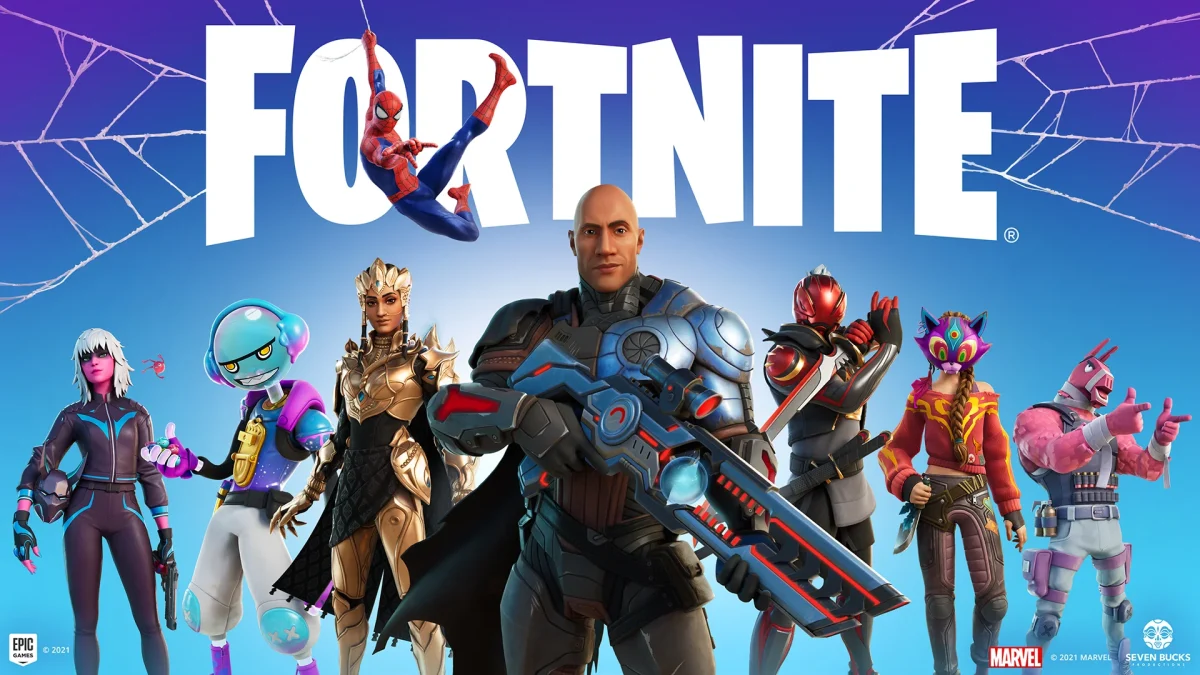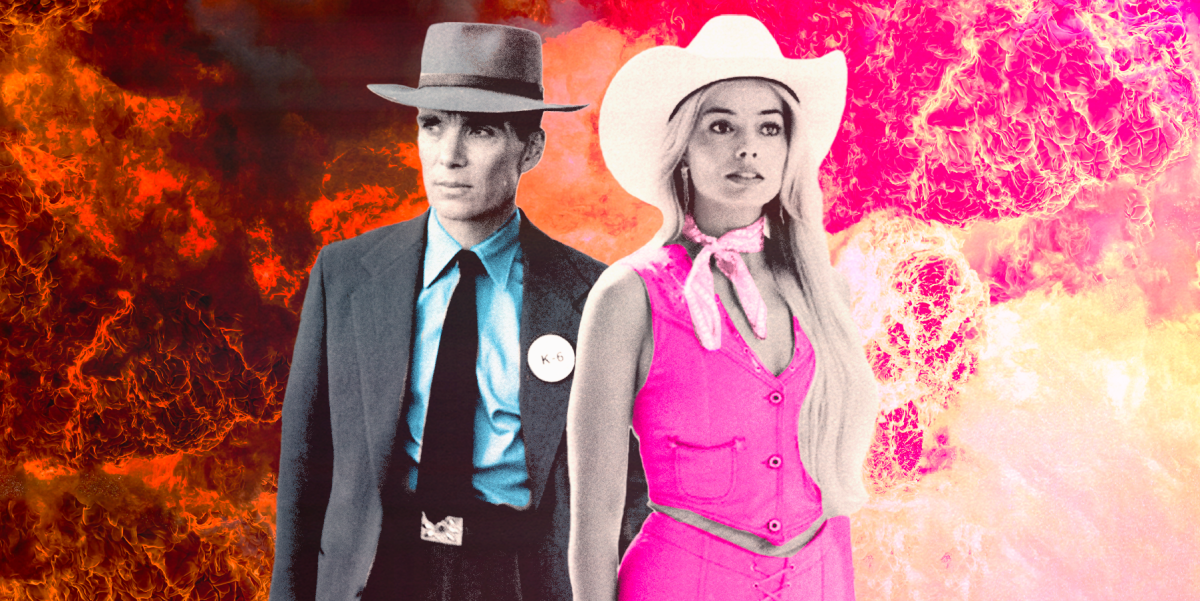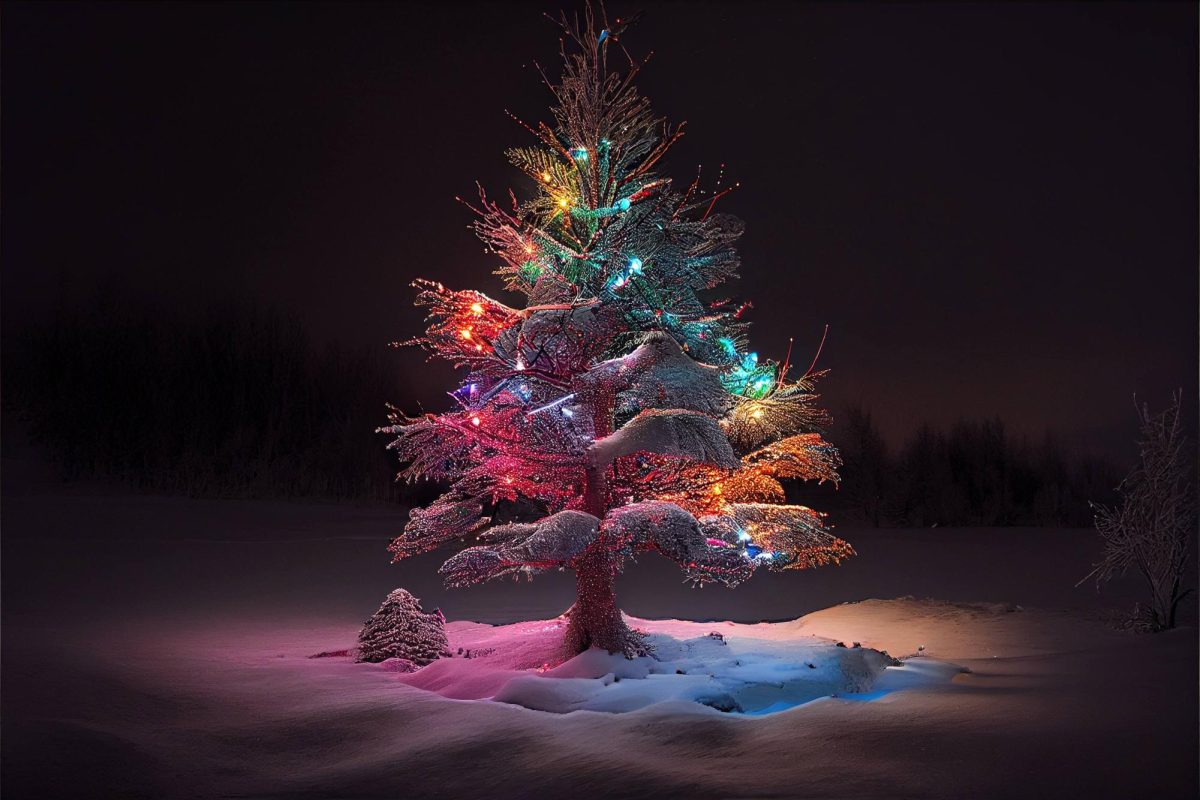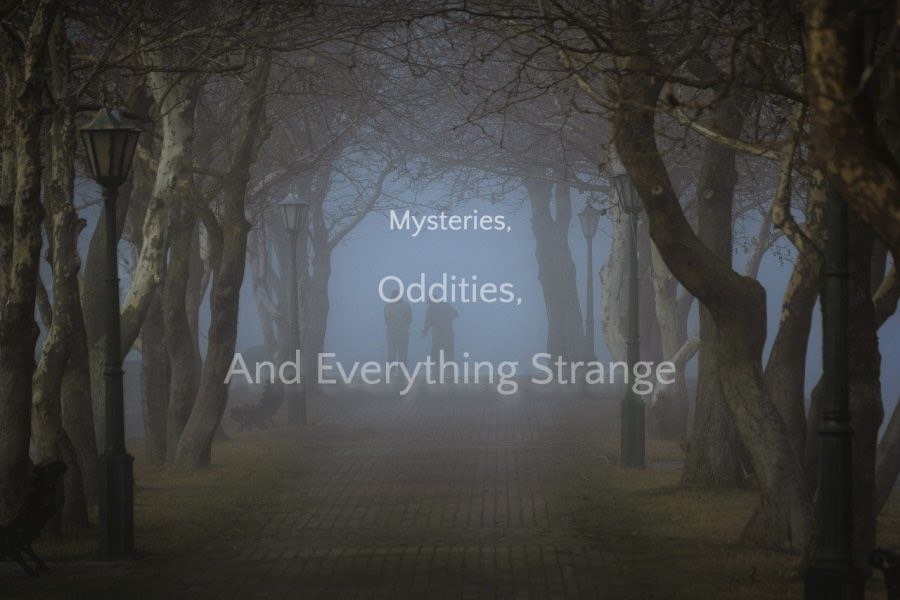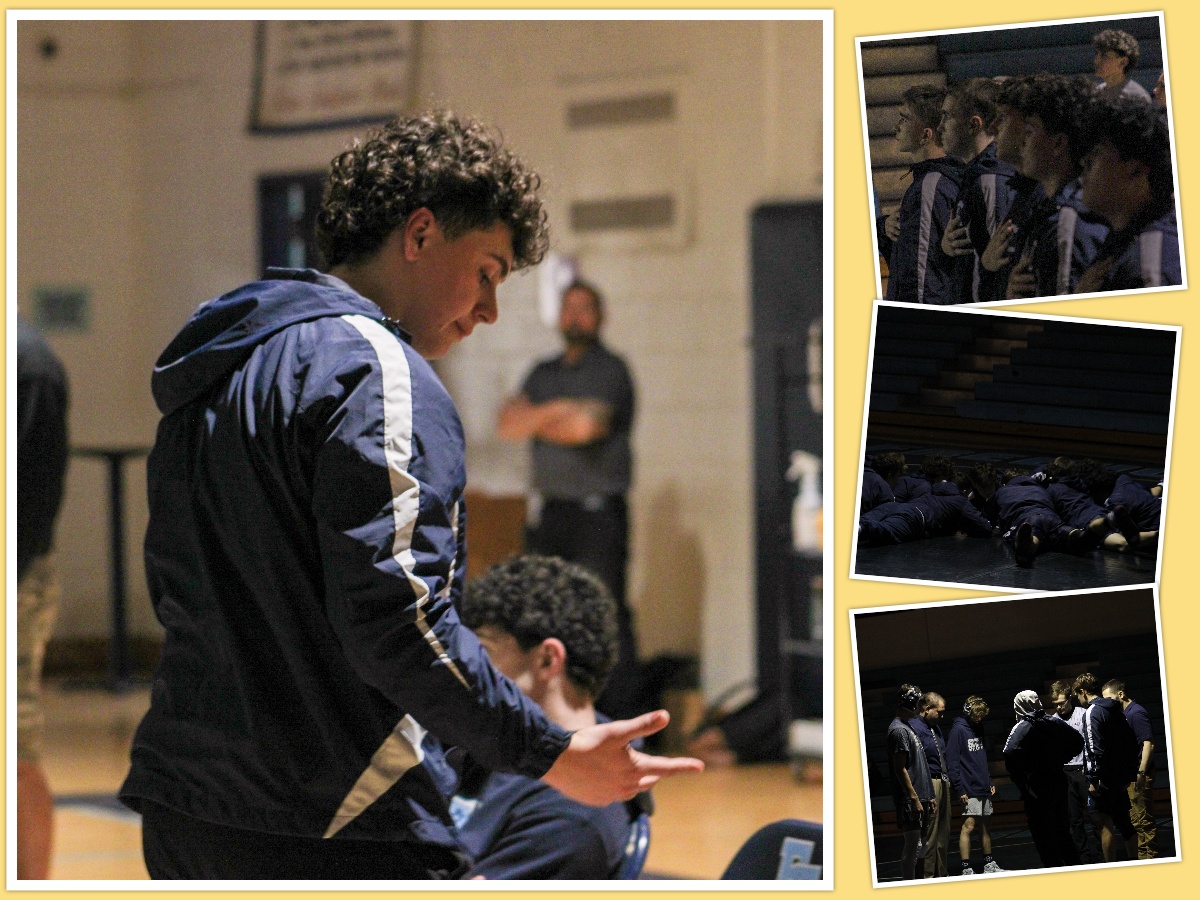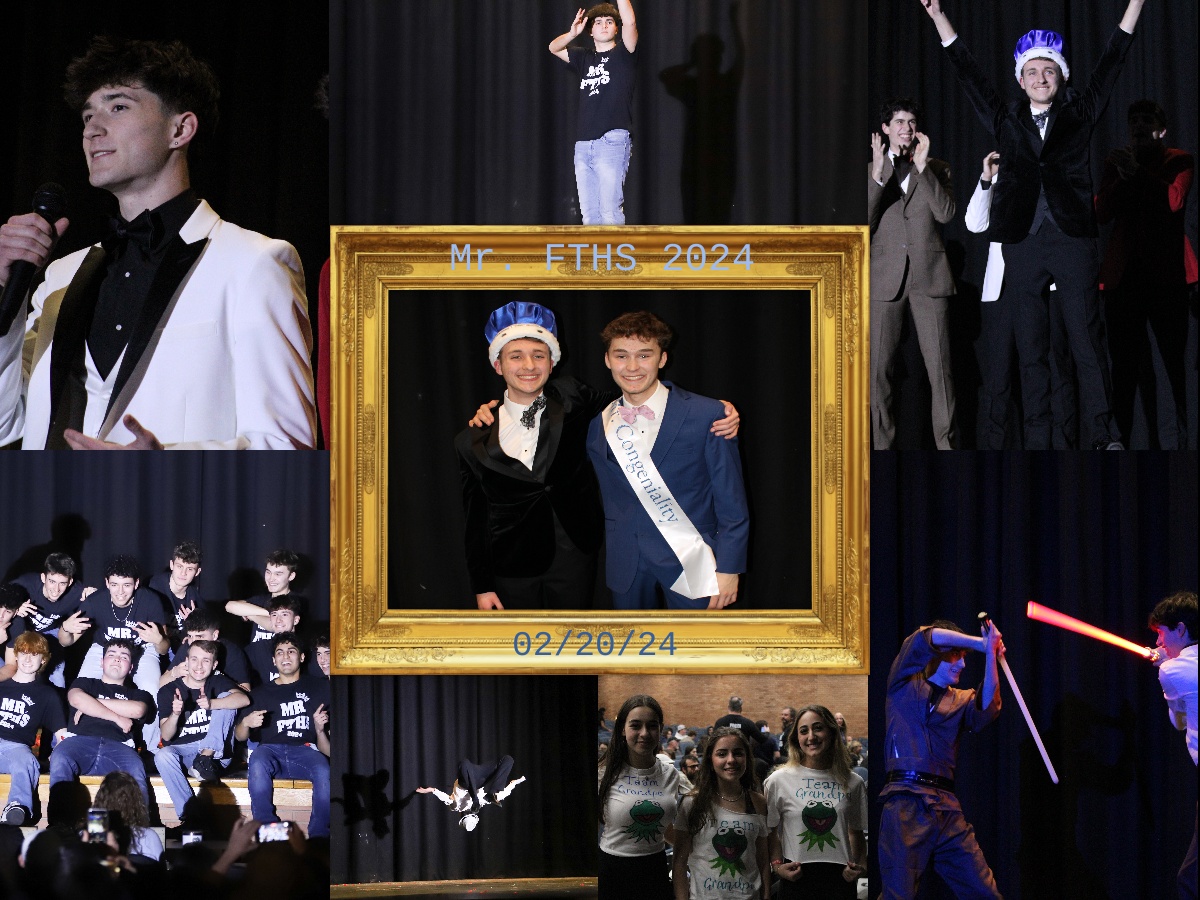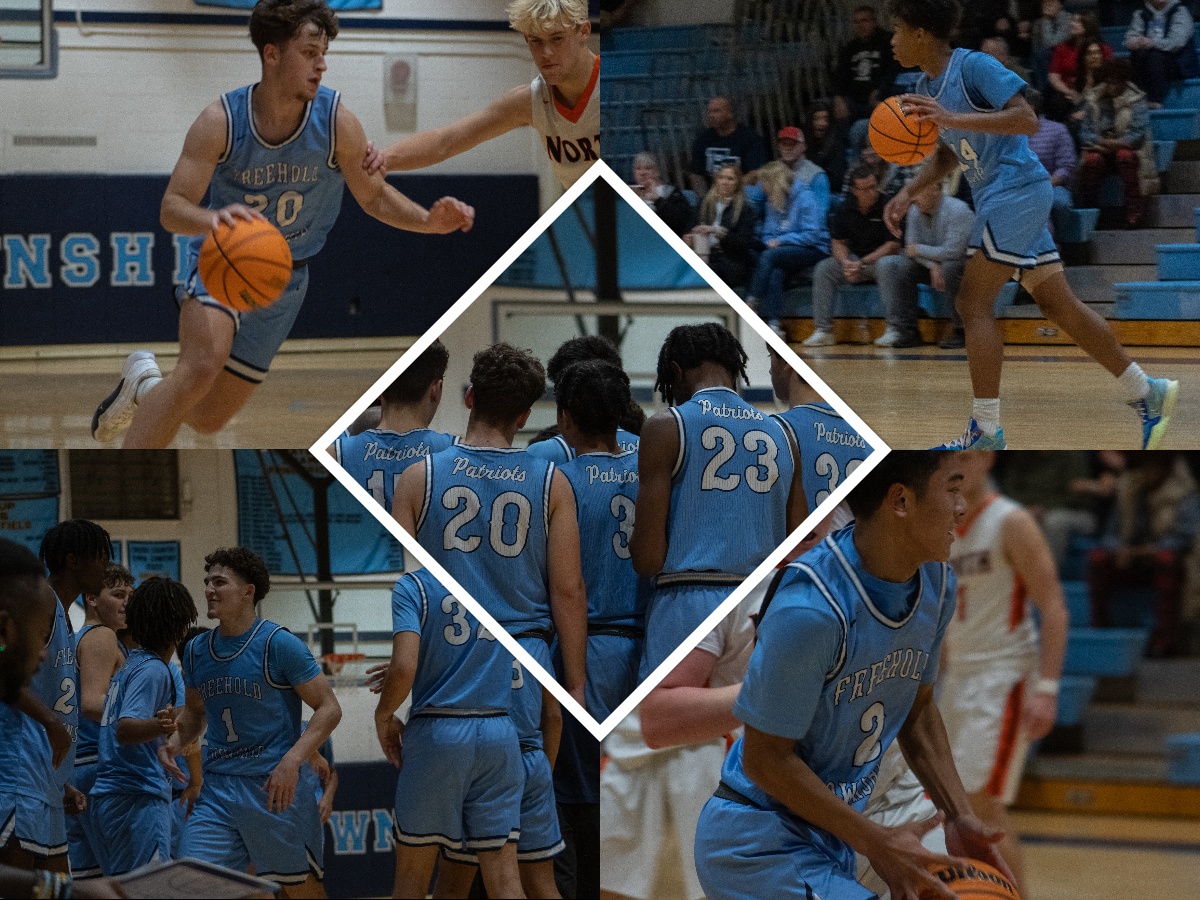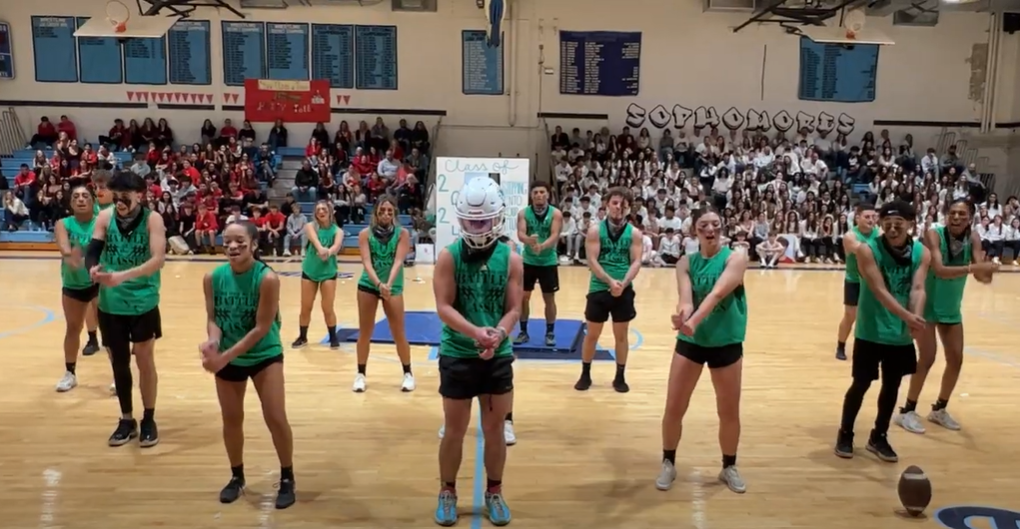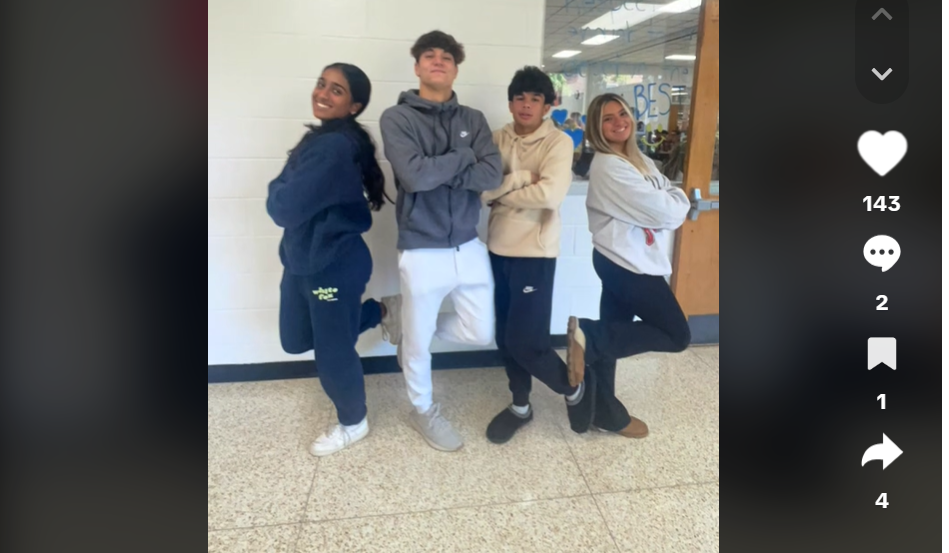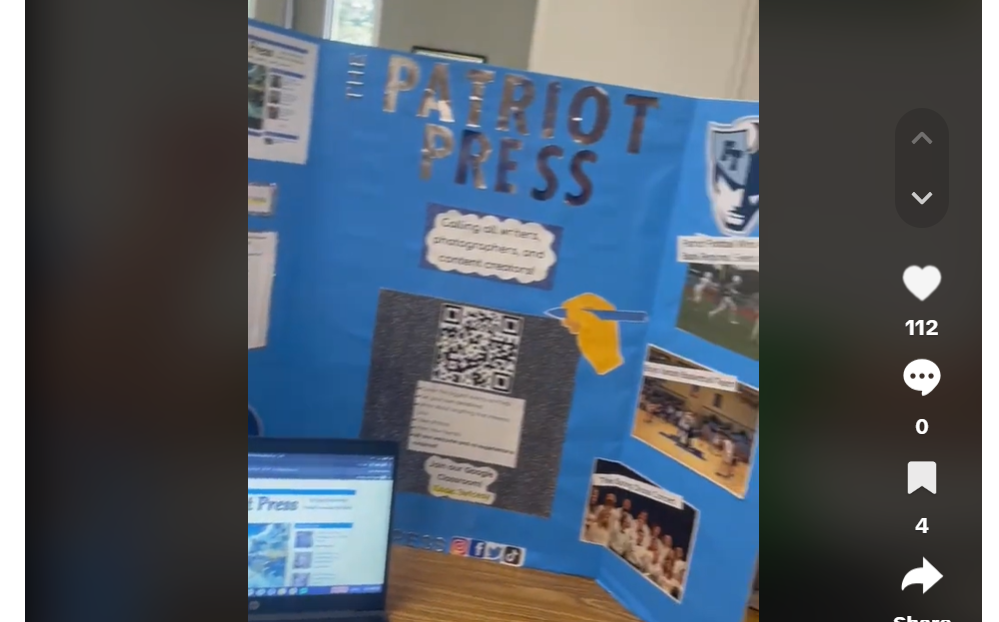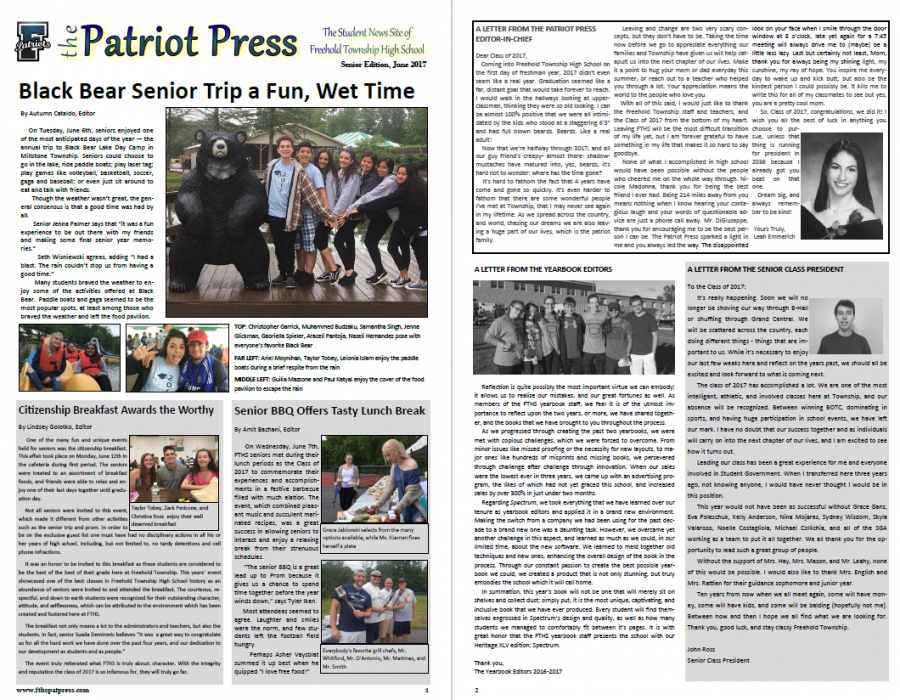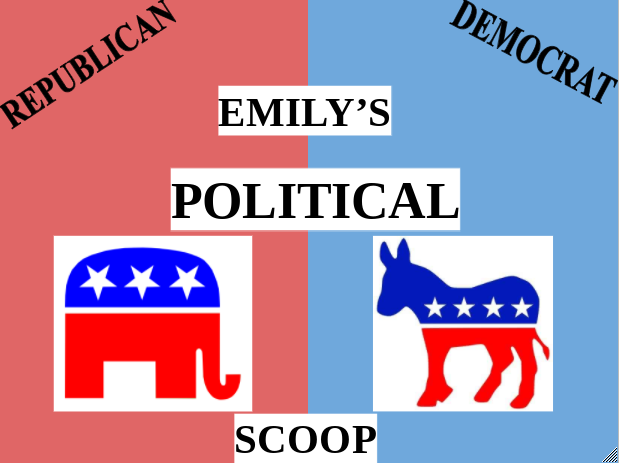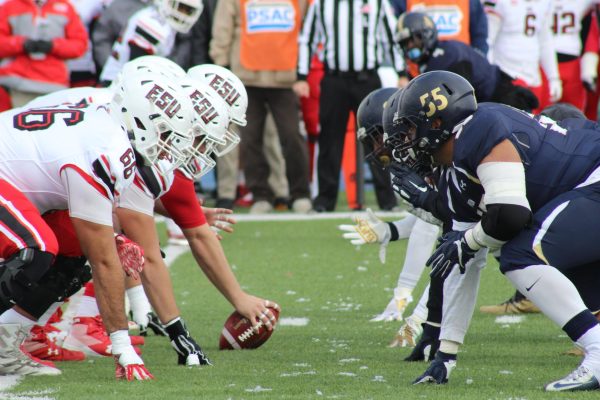Emily’s Weekly Political Scoop: The Kyle Rittenhouse Case and Charles Curtis
November 25, 2021
Before we get right into what you came for, I just want to wish you all a Happy Thanksgiving! Show love and appreciation for yourself by indulging in buttery mashed potatoes, your aunt’s famous pumpkin pie, and whatever stuffing is made out of. Don’t forget to acknowledge who and what you are thankful for and although it is majorly important to stay on top of everything politics, it may not be the best idea to bring that up over a meal centered around an immaturely cut turkey. However, if you are not currently playing a board game with your cousins or passing around the bowl of steamed string beans, take a few minutes to learn more about a groundbreaking event that occurred over the weekend and an influential figure who sparked Native American political representation.
The Kyle Rittenhouse Case: Whether you have heard of it on the news or on your instagram timeline over the past weekend, Kyle Rittenhouse’s trial and not guilty verdict after shooting three men during Jacob Blake’s protest turned riot has taken America by storm, resulting in public outrage. NBC lays out the charges held against him that have now been acquitted, including reckless homicide, intentional homicide, attempted intentional homicide, and two counts of recklessly endangering safety. The importance of the trial is one based on gun rights and race, and the jury consisted of seven women and five men (Li). Hold on though, who is Kyle Rittenhouse and what happened? Let’s rewind.
NPR explains that on August 23, 2020, Jacob Blake, a Black man, was shot six times in the back by a Rusten Shesky, a White police officer, in Kenosha, Wisconsin, leaving him paralyzed. How exactly did the event unfold? In the 19-page complaint issued by Blake’s legal team to file a lawsuit against the Shesky for excessive force, Blake was involved in verbal disputes with two women at his son’s birthday event and police were called to the scene on the basis of “family trouble.” They approached Blake while he put his son in the backseat of his Dodge SUV and radio reports further exemplify that officers were trying to arrest Blake for a sexual assault warrant, which was actually dropped in November, 2020 (Treisman).
According to the complaint, Sheskey, with no announcement of an arrest, grabbed Blake by the wrist and issued force onto his arm and other officers placed him in a headlock, punched him, and shocked him with a taser three times. During the physical altercation, Blake dropped a folded utility knife on the ground, picked it up, and started walking toward the car where his two young children resided as officers drew out their guns. He opened the driver’s door, threw the knife on the floor, sat down, and was then pulled back by his shirt by Sheskey, who then fired his semi-automatic pistol seven times (Treisman).
Six of those shots were fired into his back and one started into the SUV, lucky missing the children in the backseat. Video evidence proves the positioning of Blake and Sheskey when the shots were fired, which resulted in Blake enduring numerous surgical procedures, physical rehabilitation, the inability to return to his security guard profession, and the need for others to assist him in aspects of life we consider basic (Treisman).
BBC explains that the public experienced immense outrage, exemplified by social media’s influence. Two nights of protests turned to riots occurred in Kenosha against the police brutality enforced onto another Black man. As a third night approached and violence began, 17-year-old Kyle Rittenhouse arrived brandishing a semi-automatic rifle with the purpose of protecting property and offering medical assistance. As he was welcomed by police officers, he viewed his presence as non-threatening and instead needed (BBC News).
NPR lays out the following events that ultimately resulted in two dead and one severely injured. Joseph Rosenbaum, an unarmed 36-year-old man participating in the protest after having just been released from the hospital, crossed paths with armed Rittenhouse in a used-car lot. Rittenhouse’s lawyers illustrate that Rosenbaum approached Rittenhouse, trying to engage with him and out of fear, the 17-year-old ran away. Rosenbaum did not let him get away, chasing him as proved by video footage, which captured the moment when Rosenbaum threw a plastic bag filled with his belongings at Rittenhouse who then fired four shots at the 36-year-old. In Rittenhouse’s trial, he and a witness clarified that Rosenbaum reached for the rifle (Romo). This action is what caused Rittenhouse to be charged with reckless homicide (Li).
Returning to what happened that night, the next man to be fatally shot by Rittenhouse was Anothony Huber, a 26-year-old skateboarder and friend of Jacob Blake. After Rittenhouse’s first killing, he was scared and ran off toward a police line, but he did not go unnoticed. Several protesters thinking he was there as an active shooter chased after him, including Huber who eventually caught up with him. In an act to stop Rittenhouse, he hit the teen with his skateboard and the two participated in a physical tussle, resulting in Rittenhouse firing one bullet into Huber which was enough to kill him. Video evidence captures the 26-year-old staggering away and collapsing to the ground (Romo). This altercation charged Rittenhouse with intentional homicide and though he was acquitted of the charge, Huber’s family have filed negligence claims against the city of Kenosha and Kenosha County (Li).
The night’s events weren’t over as a second man of the name Gaige Grosskreutz, another one of the protestors who chased Rittenhouse alongside Huber, engaged with the young man. Grosskreutz was the only one of the three men armed, the weapon being a pistol, and he carried his usual medical supplies that he brought with him to protests. Believing he was an active shooter, he interacted with Rittenhouse brandishing his weapon. Although initially claiming he was not intentionally pointing his gun at Rittenhouse, he agreed it was at the moment he was shot. The violent dispute ended with Grosskreutz losing 90% of his right bicep as he was shot in the arm. This violent interaction caused Rittenhouse to be charged with attempted intentional homicide (Li), and Grosskreutz filed a lawsuit claiming that city officials and law enforcement knew of, supported, and worked with armed vigilantes [a group of people who undertake law enforcement in their community without legal authority] (Romo).
We know that all of these charges were dropped during the final day of his trial this past Friday, November 19, 2021, but what you may not know is that this is no shocker to legal experts. NPR details that although prosecutors outlined how Rittenhouse had put himself in danger based on reckless decisions, including going to Kenosha during a violent period of riots, arming himself with an AR-15 rifle, and disobeying curfew after being isolated from his initial group, the law of self-defense enables someone to “use deadly force if they reasonably believe they are in imminent danger of death or great bodily harm.” Though Prosecutors emphasized he was the only one there to shoot someone that day and two of the men he shot thought he was an active shooter, Rittenhouse’s testimony pushed how he feared for his life and how his safety was threatened, which was stabilized even more as the defense enforced he was only there to protect private property and provide medical aid (Sullivan).
When Rittenhouse testified, his stance was effectively re-enforced. Mixed with the hardship of disproving self-defense claims and the defense’s ability to utilize the prosecution’s witnesses, legal exports recognized the likelihood of Rittenhouse getting off with all charges (Sullivan). Reactions of the verdict are widely mixed throughout the country on the basis of numerous factors detailed by BBC, including self-defense, race, guns, the judge himself, and vigilantism. The verdict has sparked further talk of the parameters of self-defense, specifically of whether some of the laws put in place sufficiently consider the whole of circumstances involving lethal force. Further, the question of who can possess guns and then proclaim self-defense when someone is killed has been raised. Although none of the men who Rittenhouse shot were Black, Black Lives Matter protesters argue that White privilege has enabled the now 18-year-old to have a fair trial (Iqbal).
As expected, the question of gun rights has been once again brought to the forefront of American society, with gun-control activists arguing in favor of the type of loopholes that are used to allow someone to carry firearms, as Rittenhouse’s charges of possessing a dangerous weapon were dropped on the basis of the barrel not reaching the illegal limit of a few inches shorter. Gun-right activists have used this situation as a way to highlight the importance of possessing guns for personal protection purposes. The judge, Bruce Schroeder, has been scrutinized by some of the public based on claims of bias, as long-serving circuit judge has had a history of certain behaviors, such as having the defendant conduct the random drawings that choose the jury and quizzing jurors on specified trivia, and a reputation of favoring the defense jurist. The final factor, being one I mentioned earlier, is vigilantism, raising the question of whether Rittenhouse was acting in self-defense or provoking a highly tensioned situation in a city he is not a resident of as a dangerous vigilante (Iqbal).
Immerse into the Diverse: How much do you know about Vice Presidents? Personally, I don’t think they receive the recognition they deserve, especially former Vice President Charles Curtis. The National Park service details that Curtis was born on January 25, 1860, in North Topeka, Kansas Territory (prior to its statehood), biologically three-eighths Native American (Kaw, Osage, and Potawatomi) and five-eights European (primarily French, Welch, and Scottish). As a member of the Kaw tribe, because his mother Ellen Papin was a Kaw woman, Curtis grew up on the Kaw reservation and spoke Kaw and French (“Charles Curtis (U.S. National Park Service)”).
His time with his mother was short lived, however, as she died when he turned three. His father, a white man, was not a prevalent figure in his life, and the lack of both parental figures resulted in him living with his maternal grandparents during his childhood and his paternal grandparents as a teen. Relocation being a common occurrence for tribes during this time, their reservation was eventually moved to the Indian Territory, now known as Oklahoma, where he remained with his maternal grandparents and re-enrolled in the Kaw Nation (“Charles Curtis (U.S. National Park Service)”).
I know it may seem like there is no relation between ourselves and major leaders in U.S. history, but let’s not forget that everyone is a teenager at one point or another. The same remains true for Curtis, who attended Topeka High School in Kansas while living with his paternal grandparents. He was a very successful competitive horse rider, but his grandmothers weren’t so keen on letting him pursue a career in the sport, so he opted for being a lawyer instead (“Charles Curtis (U.S. National Park Service)”). The Miller Center of the University of Virginia further explains that after graduating high school, Curtis studied law on his own and became an elected county attorney in 1885 (“Charles Curtis”). Being attorney allotted him the opportunity to interact with Herbert Hoover’s Uncle Laban J. Miles, Hoover being the future President to Curtis’ Vice (“Charles Curtis (U.S. National Park Service)”).
Curtis wasn’t just non-stop making his way up the political pyramid in the late 1800s. In 1884, he married Annie Elizabeth Baird and became a father of three: Permelia Jeannette Curtis born 1886, Henry/ Harry King Curtis born 1890, and Leona Virginia Curtis born 1892 (“Charles Curtis (U.S. National Park Service)”). Further, his political journey was not always smooth sailing. Although gaining notice as a county attorney in the state due to his fervid enforcement of Prohibition laws and 1886 reelection, he lost nomination for a seat in the House of Representatives in 1889 (“Charles Curtis”).
Surprisingly though, he was elected into the House as a Republican in 1892 even though Kansas voted for Populist candidates. After serving seven terms in the house, he was chosen by the state legislature to fill a Senate seat in 1907 and won it again on his own based on popular vote in 1914. With his experience in government, he was deemed the ideal person for the position of party whip, in which he became a significant figure in major political controversies. After serving in this title, he inherited the position of Majority Leader after the death of his predecessor in 1924 (“Charles Curtis”). All of his achievements skyrocketed the importance of his stance within the Republican party, and to think we haven’t even discussed his rise to vice presidency.
Throughout all of his various government positions, he focussed on Indian affairs and displayed pride in his heritage, evident through his wearing of headdresses, showcasing objects in his objects derived from Kaw culture, and boosting his personal tale as an “American Indian success story.” As he became a stronger, more prominent figure in the political domain, he began making moves towards the stars, or more accurately, the presidency (“Charles Curtis (U.S. National Park Service)”). When 1928 rolled around, Curtis tried to earn a presidential nomination, hoping a deadlocked convention would enable him to win. Unfortunately for him, he was not successful and Herbert Hoover gained the nomination. However, hope was not lost. Hoover approached Curtis and offered him the vice presidential nomination, aware that a senator from Kansas would help him gain popularity in farm states which he accurately predicted. President Hoover won the election and although major in terms of appointing the first, and only, Native American in an executive position, Curtis was mostly put on the back burner (“Charles Curtis”).
Their relationship was anything but meaningful, and it is widely considered to have been a political convenience than anything else. Considering they initially were campaigning against each other, tensions were bound to be high (“Charles Curtis”). In 1928 during the Republican convention, Curtius outwardly opposed Hoover’s nomination and promoted his own, which obviously didn’t work out. Despite his positive reputation and connections in Congress, he was disregarded during discussions of legislation and ordered to watch over the Senate, in turn allotting him no power in the White House. (“Charles Curtis (U.S. National Park Service)”). Besides attending a handful of cabinet meetings, Curtis was not able to make any influential moves during his leadership. Although elected as his VP, Curtis barely helped sway public opinion to Hoover’s side during the 1932 election, ultimately resulting in the presidential loss to President Franklin Roosevelt (“Charles Curtis”).
Living in retirement from public life, Cutis practiced law in Washington, D.C. which led up to his death on February 8, 1936 (“Charles Curtis”). Although it may seem like he legally did little, his impact on the representation and opportunity for Native Americans in the political sphere is cosmical. Since he is the first and only Native American to have reached such a high position in government power, he showcases to those discouraged and battered down that achievements are possible and success will prevail. The treatment of Native Americans within the history of the U.S. is tragic and draw-out for centuries, and it is crucial to recognize each figure that has strived and/or are successful in influencing social change and opinion.
Works Cited
BBC News. “Kyle Rittenhouse: Who Is US Teen Cleared of Protest Killings?” BBC News, 19
Nov. 2021, www.bbc.com/news/world-us-canada-53934109.
“Charles Curtis.” Miller Center, 4 Oct. 2016,
millercenter.org/president/hoover/essays/curtis-1929-vicepresident.
“Charles Curtis (U.S. National Park Service).” National Park Service,
www.nps.gov/people/charles-curtis.htm.
Iqbal, Nomia and Zurcher, Anthony. “Kyle Rittenhouse Case: Why It so Divides the US.” BBC
News, 20 Nov. 2021, www.bbc.com/news/world-us-canada-59348734.
Li, David, et al. “Kyle Rittenhouse Not Guilty in Kenosha Trial.” NBC News, 19 Nov. 2021,
www.nbcnews.com/news/us-news/rittenhouse-verdict-jurors-reach-decision-rcna5090.
Romo, Vanessa, and Pruitt-Young, Sharon. “What We Know about the 3 Men Who Were Shot by
Kyle Rittenhouse.” NPR, 20 Nov. 2021,
www.npr.org/2021/11/20/1057571558/what-we-know-3-men-kyle-rittenhouse-victims-r
senbaum-huber-grosskreutz.
Sullivan, Becky. “Why the Kyle Rittenhouse ‘not Guilty’ Verdict Is Not a Surprise to Legal
Experts.” NPR, 19 Nov. 2021,
www.npr.org/2021/11/19/1057422329/why-legal-experts-were-not-surprised-by-the-ritte
house-jurys-decision-to-acquit.
Treisman, Rachel. “Jacob Blake Files Excessive Force Lawsuit Against Kenosha Police Officer
Who Shot Him.” NPR, 26 Mar. 2021,
www.npr.org/2021/03/26/981590041/jacob-blake-files-excessive-force-lawsuit-against-
enosha-police-officer-who-sho.


